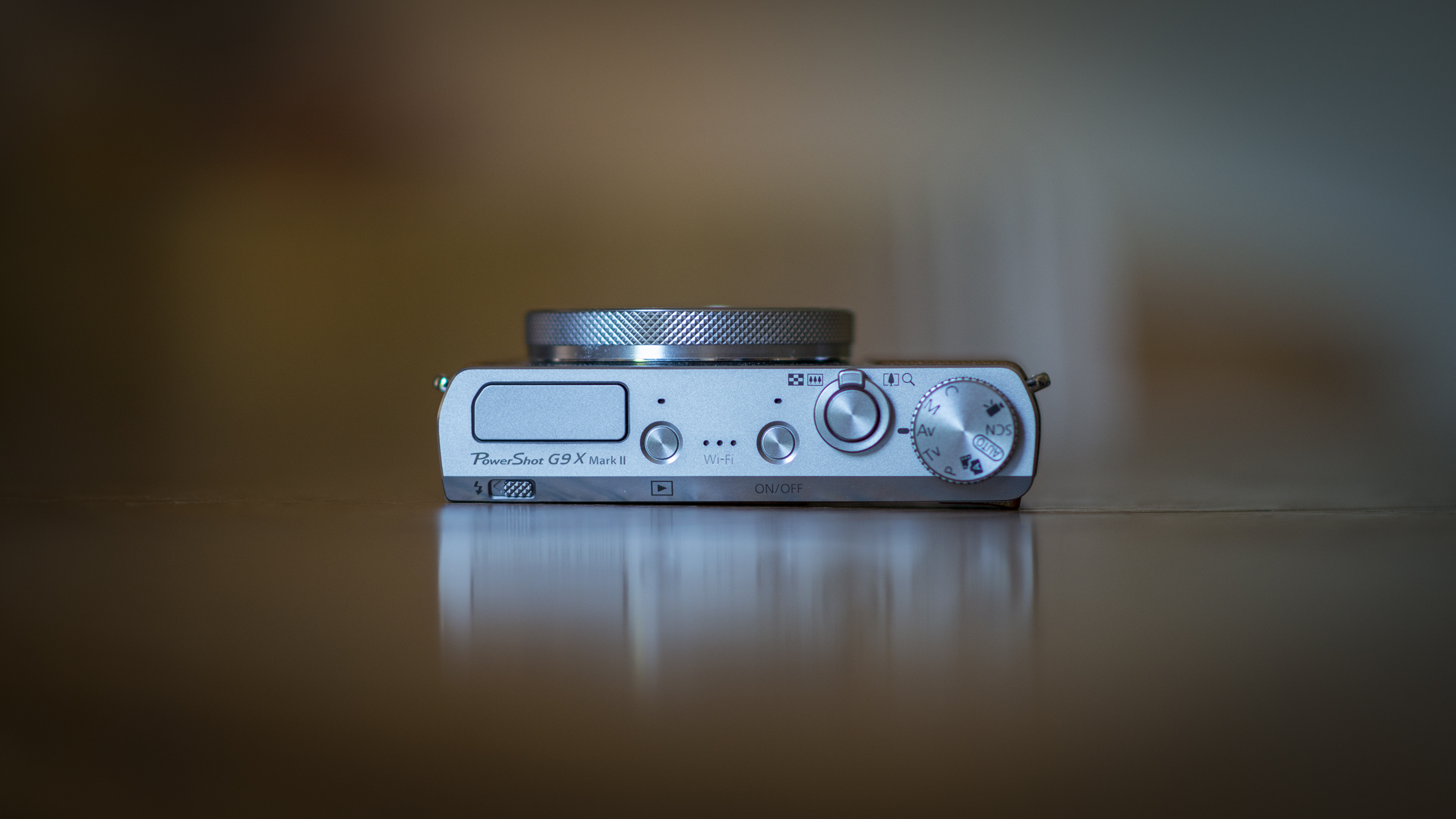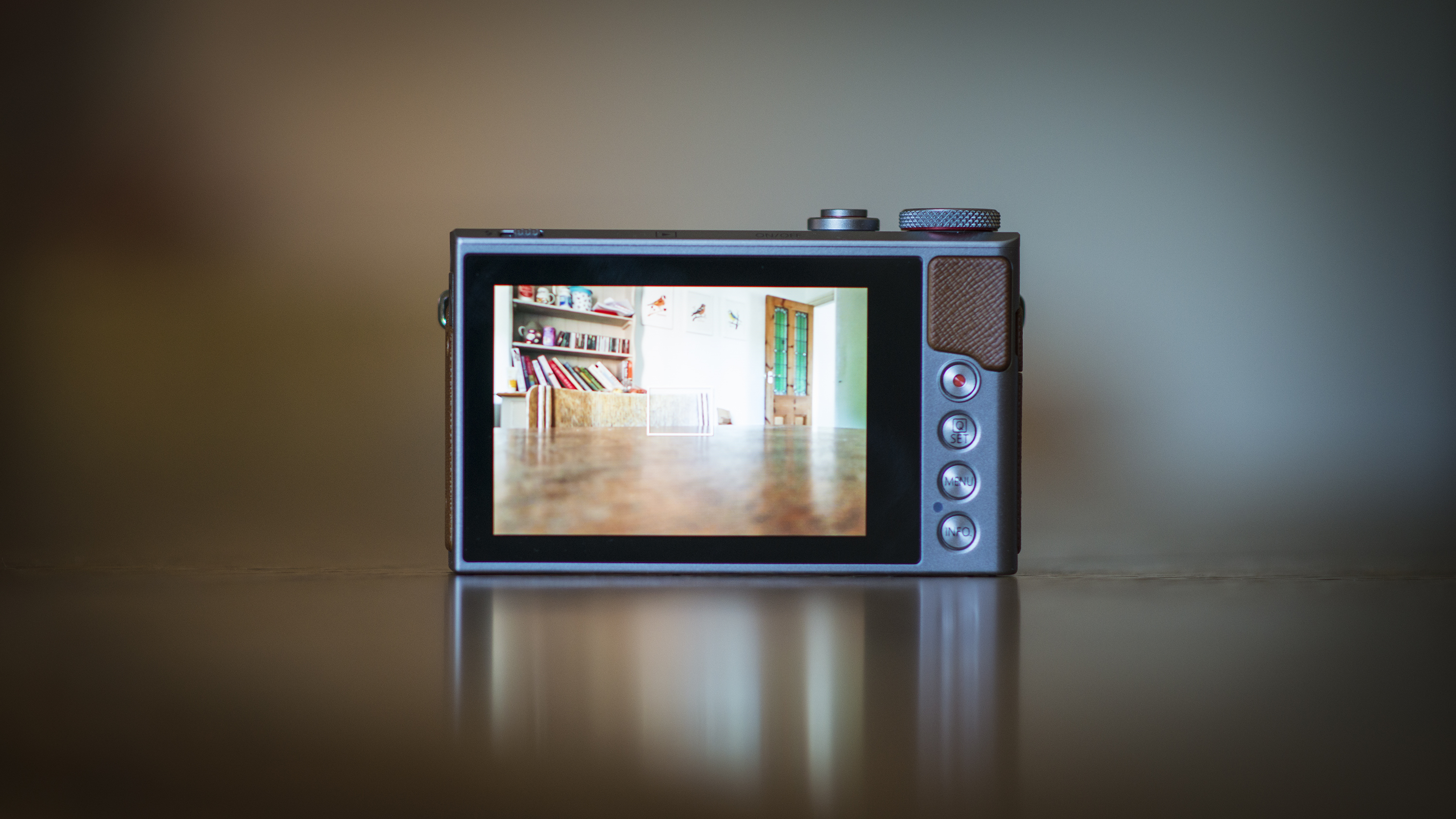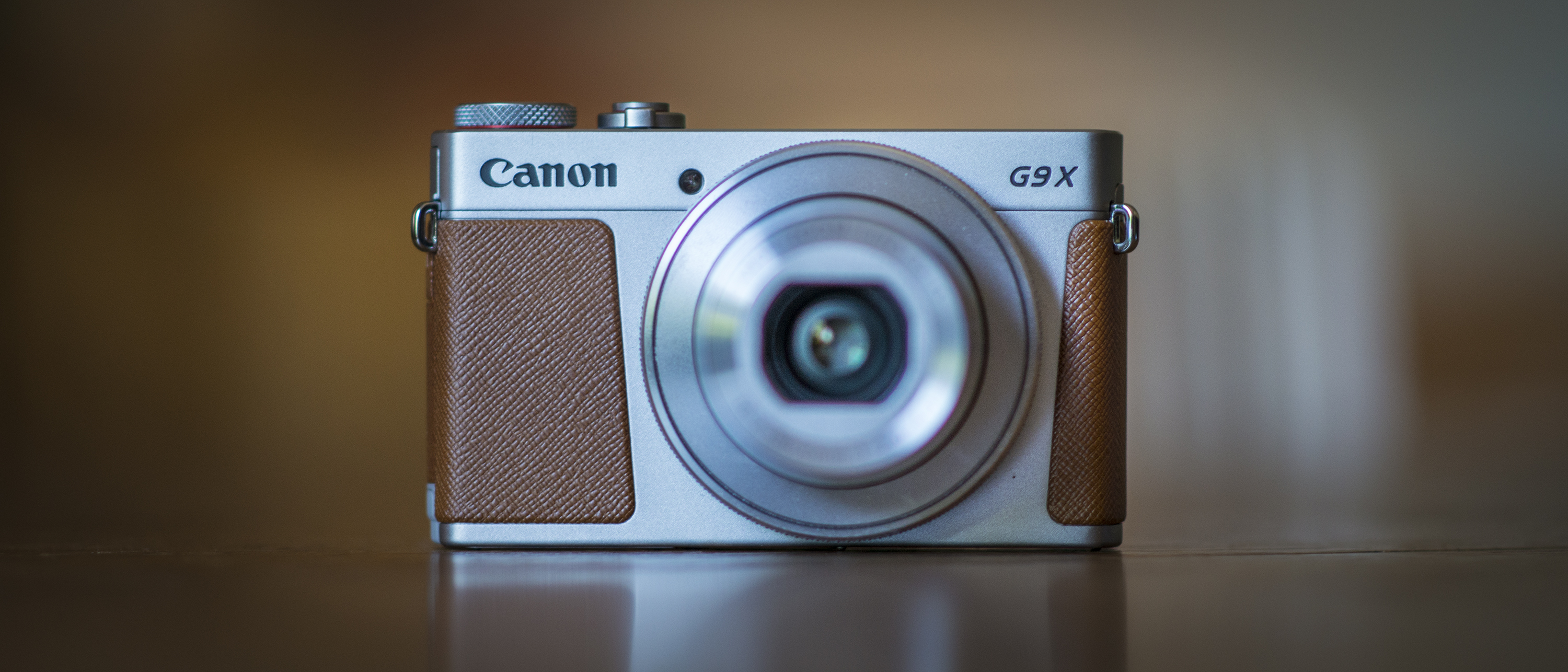Why you can trust TechRadar
Build and handling
- Solid metal construction
- Truly pocketable design
- Weighs 206g
The compact proportions are the real ace up the sleeve of the Canon PowerShot G9 X Mark II. Measuring just 98 x 58 x 31mm when switched off with the lens retracted, the G9 X Mark II will happily slide into a jeans or jacket pocket, and it's noticeably slimmer than other 1.0-inch compact rivals.
Design-wise, though, little has changed externally from the G9 X – in fact, they're pretty much identical, with the only way to differentiate them being the addition of a small 'Mark II' along the camera's top plate.
The G9 X Mark II is available in either black or silver with a tan grip, with the metal finish delivering a premium feel. While there's not much in the way of a hand grip to talk about, the textured grip and rear thumb rest allow you to get a pretty decent purchase on the camera.
Its sleek design means there's no room for a built-in electronic viewfinder, and there's also no hotshoe or accessory port to enable you to add an optional one should you wish – if you want to shoot in a more traditional way, you'll need to look elsewhere.

That means the top of the G9 X Mark II is pretty clutter-free. There's a small pop-up flash, and buttons to switch the camera on and to instigate playback, while there's a zoom lever round the shutter button. There's also a mode dial for quickly switching between the various exposure modes, which include manual and semi-automatic, as well as the automatic and creative options.
Canon has taken a similarly streamlined approach round the back, with most of the camera operations carried out via the 3.0-inch, 1,040,000-dot touchscreen.

There are just four buttons on the back of the PowerShot G9 X Mark II: one to record Full HD movies, one to toggle the info displayed, one to get you into the main menu and a 'Q' button – this accesses a quick menu for adjusting commonly used settings like white balance and metering, which can also be accessed via an on-screen Q button.
Key settings can also be adjusted directly via the screen, such as ISO (sensitivity), exposure compensation, aperture and/or shutter speed, while a control ring around the lens can also be used to set certain parameters; if you're in aperture priority mode, for instance, it can be used to select the aperture, while a tap of the control ring icon on the rear display will swap the function to exposure compensation.
With pretty much all the controls adjusted by touch, operation of the G9 X Mark II can take a little while to get used to, but the touchscreen is very responsive – although unless you've got small fingers you're likely to occasionally hit the wrong option in the camera's menu system.
Autofocus
- 31-point AF
- Face detection
- Useful AF-Assist beam
Like pretty much everything else on the PowerShot G9 X Mark II, focus selection is carried out by tapping the rear display, which offers coverage of pretty much the entire frame with the exception of the extreme edges. If you wish, you can also activate the touch shutter: tap where you want to focus and the camera will trigger the shutter as well.
Focusing speed is fairly snappy throughout the zoom range, and the AFperforms well in even moderately poor light.

There's also face detection and a tracking mode – tap the subject you want the camera to lock on to and it does a pretty solid job of maintaining focus. For smoother focusing in this mode, though, make sure you have 'Servo' selected under 'AF operation'.
Finally there's a macro mode, and the option to swap to manual focus if needed.
Current page: Build, handling and AF
Prev Page Introduction and key features Next Page Performance and image qualityPhil Hall is an experienced writer and editor having worked on some of the largest photography magazines in the UK, and now edit the photography channel of TechRadar, the UK's biggest tech website and one of the largest in the world. He has also worked on numerous commercial projects, including working with manufacturers like Nikon and Fujifilm on bespoke printed and online camera guides, as well as writing technique blogs and copy for the John Lewis Technology guide.

